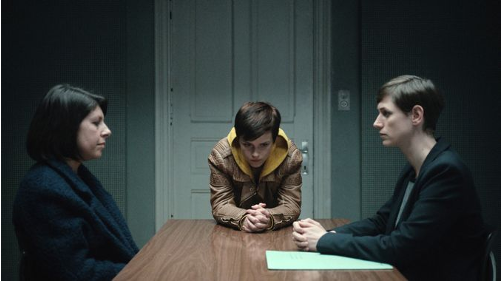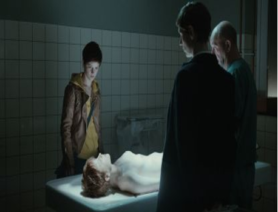Seminar Blogs
“Phantasmagoria Aesthetics: How Knowledge, Communication, and the Spectacle Operate in the Horror Genre” – Naomi Tidball
Frank Kessler, Jamilla Notebaard, and Nico de Klerk’s presentation, enlightened seminar listeners on the history of the Magic Lantern, and how the magic lantern was a (light-)source in transmitting knowledge to students. It is also worth noting, the magic lantern’s use for the spectacle; at the end of the 18th century, phantasmagoria shows were “illuminated shows,” (Jackson, 2012, 297) which demonstrated “a dialogue with ghosts.” (Ibid,2012, 297) The credibility of Phantasmagoria shows has been regarded as “the delusion of archaic otherness,” (Ibid, 2012, 298) however, as a transference of knowledge, it is worth investigating the humanistic and insatiable interest in contacting and understanding life after death. In some ways, the phantasmagoria shows still operate today, aesthetically speaking, through the horror genre. For the remaining part of this entry, I want to discuss how the sub-genre of horror, colloquially known as ‘paranormal thrillers,’ continues to operate within the context of the phantasmagoria shows; a spectacle that depends on its viewers to momentarily suspend their disbelief.
 In comparison with M. Night Shyamalan’s The Sixth Sense (1999), the Netflix series, (Hotel) Beau Séjour (2016) follows the protagonist, Cato, who discovers that she is dead, and she can only communicate with a few friends and family members. Similar to the projected phantasmagoric visuals, Cato also attempts to convince the people in her town that she is ‘present.’ In “Cine-limbo: The Millennial/New Age Virtual Afterlife Thriller,” Linda Bradley (2005) comments that “seeing is equivalent to believing and cinema technology is the medium of transcendence.” (Bradley, 2005, 9) What Bradley seems to imply is that seeing the visual specters, and through our suspended disbelief, results in a momentary realness. In the case of the ghost narrative, the simulated experience of living among the alive is a “coping mechanism” (Ibid, 4) or a “fabrication designed to postpone the recognition of loss and death.” (Ibid, 4)
In comparison with M. Night Shyamalan’s The Sixth Sense (1999), the Netflix series, (Hotel) Beau Séjour (2016) follows the protagonist, Cato, who discovers that she is dead, and she can only communicate with a few friends and family members. Similar to the projected phantasmagoric visuals, Cato also attempts to convince the people in her town that she is ‘present.’ In “Cine-limbo: The Millennial/New Age Virtual Afterlife Thriller,” Linda Bradley (2005) comments that “seeing is equivalent to believing and cinema technology is the medium of transcendence.” (Bradley, 2005, 9) What Bradley seems to imply is that seeing the visual specters, and through our suspended disbelief, results in a momentary realness. In the case of the ghost narrative, the simulated experience of living among the alive is a “coping mechanism” (Ibid, 4) or a “fabrication designed to postpone the recognition of loss and death.” (Ibid, 4)

The voyeuristic position of the audience embodies a spectral figure which floats through the scenarios of a protagonist’s life. Commenting on Todorov’s Fantastic, Bradley suggests that the ghost narrative in thriller films, often functions as:
“the spectator, sharing the dreams of the protagonist, is suspended between psychological and supernatural interpretations. Constructed as closed, artificial environments, they manipulate spectators into investing in the illusion until a closing revelation.” (Bradley, 2005, 4)
As viewers float through the series, our opinions are muted, just as Cato’s voice cannot connect to some individuals. Only by communicating through others, and through some devices, Cato can communicate and solve her murder. Returning to my previous comment, I think that all films depend on the suspension of skepticism. Regarding the phantasmagoria, the continual use of the ghost narrative seems to implicate a human fascination and fear in communicating with, or in the afterlife.
References
- “THE MAGIC LANTERN.” 1870. Scientific American 22, no. 1 (January): 13. http://www.jstor.org.proxy.library.uu.nl/stable/26036397.
- Badley, Linda. 2005. “Cine-limbo: The Millennial/New Age Virtual Afterlife Thriller.” Studies in Popular Culture 28, no. 1 (October): 1-14. http://www.jstor.org/stable/23416210.
*Image credits: Nuyens, Sanne, Bert van Dael, and Nathalie Basteyns, dirs. 2016. (Hotel) Beau Sejour. Netflix. https://www.youtube.com/watch?v=e0040giKJBA.

